The Generas Heurnia, Stapelia and Orbea has fallen in stature by being demoted to subfamily Asclepiadoideae from family Asclepiadaceae . This may be a serious concern for a Botanist but for the hobbyists, it is rather a matter of semantics.
What’s in a name? That which we call a Stapeliad/Orbea
By any other word would smell as obnoxious…
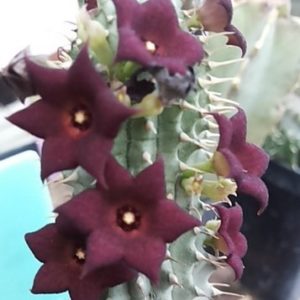
Why are they so intriguing or collectible?
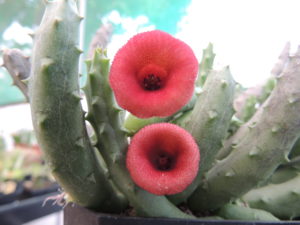
They grow in extreme arid conditions where the delicate, friendly, flitting and pollinating butterflies or moths are not present. They have to make do with what is available as local resources. And those are – Carrion flies, Blow flies , Blue bottles, Green bottles and the likes. To attract a pollinator and make it do its job, the plant has to appease the pollinator by dishing out what the pollinator likes.
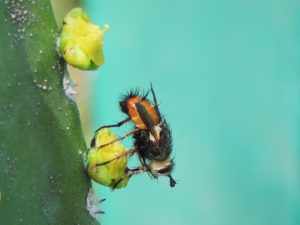
Nature thus adapts and evolves the plant to successfully curry favour with these pollinators. And you know it is always – ‘give and take’ policy with mother nature ! (Adaptation and Interdependence). It seems the flies get carbohydrates from the flower nectary.
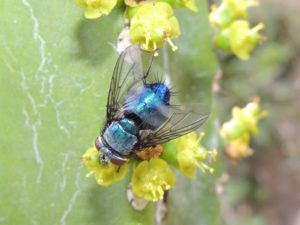
Guile or adaptations used :-
- Though they have varying types and colors of flowers, but it is thought that the flowers imitate the look and feel of mammal flesh ,ie, the color of flowers is in shades of dirty browns, blood red , yellowish , with red lines crisscrossing as blood vessels. The carrion flies are deceived to think of the flower as a dead animal.
- Flowers are often hairy to simulate mammalian skin.
- The fragrance of a usual flower is replaced by odours ranging from mildly foul to a powerful stench.
- And to make sure the entrapment is convincing, the core temperature of the flower is higher than the ambient to simulate bacterial or fungal rot!!!!!!!!!
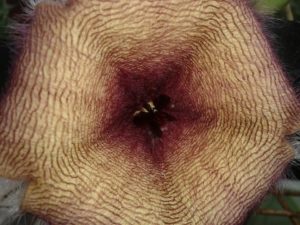
What cannot adapt will not survive! And there is no life without interdependence!
Ok now that you have been hooked on to ascleps as (C n S addicts call them), you need to know how to look after them too. Here are a few suggestions. Please note that plant care does not follow the exactness of Physics. Local conditions like, amount of sunlight, (day length and intensity), kind of planting media, local humidity , shift in day and night temperature etc, do influence the generics suggested. Perception of people to terms like, humid or dry, cool or hot grossly varies as per the region they hail from. So you must add your own interpretation and experience to what ever you read in any guidelines or plant care articles.
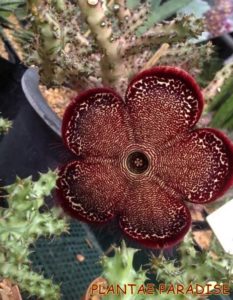
Plant Care
- The plants hate damp and soggy media for long time. Ensure media is well drained.
- To avoid rot they must be kept in well ventilated places. Still air and damp media for long will result in rot.
- Do not water when plant is dormant. When you see active or new growth start watering the plants.
- Do not fertilize or water a fresh cutting. Let the cutting grow some roots. Only after rooting can a plant enjoy food and drink.
- Plants are prone to root mealy bug. If plant seems to be dehydrating rapidly in growing season, uproot and inspect the roots. Wash with mild insecticide. Dry the plant for a few days and plant in fresh media.
- Potting media should be gritty, porous and free draining , without much of organic content .
- Organic fertilizers may be good for most plants but for cactus and succulents when applied in excess and coupled with moistness, may host causative agents of fungal and bacterial rot.
- Disposal of dead. Never keep dead plants or parts of dead plants near the living plants. Not only it lowers the morale ( of living plants and owner as well ) but the rule of nature is that the dead have to be utilized and returned to Earth by bacteria and fungus (decay and rot). The same saprophytes can affect the living tissue of your living plants. Infection spreads by insect bites.
-
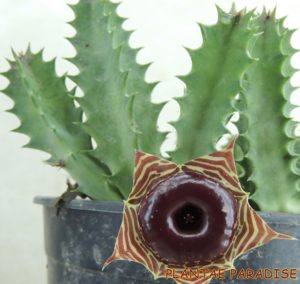
Heurnia zebrina magniflora
Propagation
- Seeds. Fairly easy to germinate in warm and humid conditions. Thereafter, close monitoring required till they are about 3 months old. Seedlings are delicate and prone to rot.
- Cuttings. Easiest method. Just cut a branch and sit it on a paper and let the cut dry. When cut is properly dried in a few days time, lay the cutting on the pot. The cutting will root from many places. Uproot , reorient and plant the cutting in an erect manner or as desired.

Happy Planting!
Enjoyed reading.
Simple and exact!
Bring on more
The article like most articles on this site speak from bounteous practical experience and cacti lovers can benefit immensely if they follow the advice provided. The key however is always to understand the best conditions for the plant. To provide the one’s you can and to find the the right compensation or adjustment for the ones you cannot.
I included this write-up to my favorites